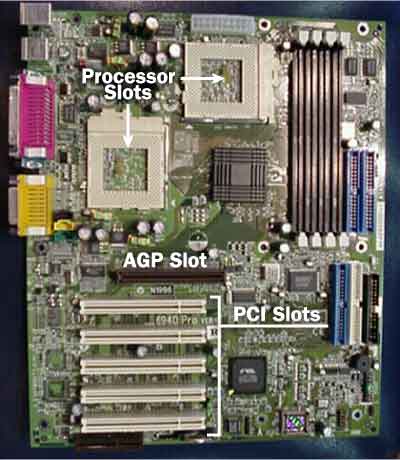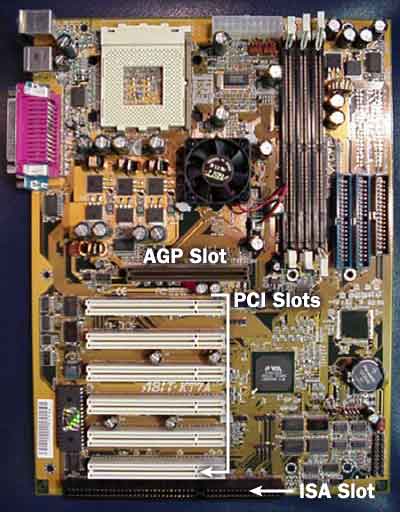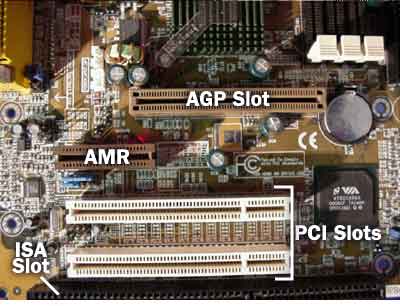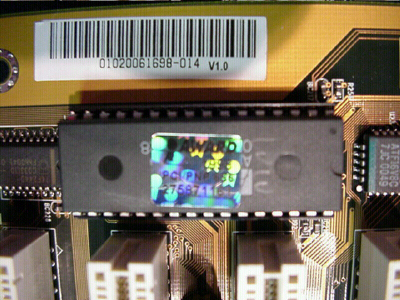On the Motherboard
A motherboard is a multi-layered printed circuit board . Copper circuit paths called traces that resemble a complicated roadmap carry signals and voltages across the motherboard. Layered fabrication techniques are used so that some layers of a board can carry data for the BIOS , processor and memory buses while other layers carry voltage and ground returns without the paths short-circuiting at intersections. The insulated layers are manufactured into one complete, complex sandwich. Chips and sockets are soldered onto the motherboard.
Examples
The MSI 694D Pro AR supports dual Pentium microprocessors, has five PCI slots and a communications network riser (CNR) slot. The board supports 133 MHz bus speeds and ultra-direct memory access-100 (UDMA). There are four USB ports and onboard audio in the ATX form factor board.
 MSI 694D Pro AR Dual Flip Chip Socket 370 motherboard |
The Abit KT-7A supports Advanced Micro Devices (AMD) processors and has the KT-133A chipset. The card slots on the Abit KT-7A, from bottom to top in the image below, shows that ISA has one slot, PCI has six slots and AGP has one slot. A special fan cools the chipset.
 Abit KT-7A AMD Processor Motherboard |
A partial view of the TechRam S3ProM motherboard shows slots: From bottom to top, ISA has one slot, PCI has two slots, audio modem riser (AMR) has one slot, and AGP has one slot.
 TechRam S3ProM Motherboard |
The BIOS chip is common to many motherboards.
 BIOS Chip |
Back to How It Works
› Introduction to How Motherboards Work
› Background
› On the Motherboard
› Data Bus Width
› Chipsets
› Fans